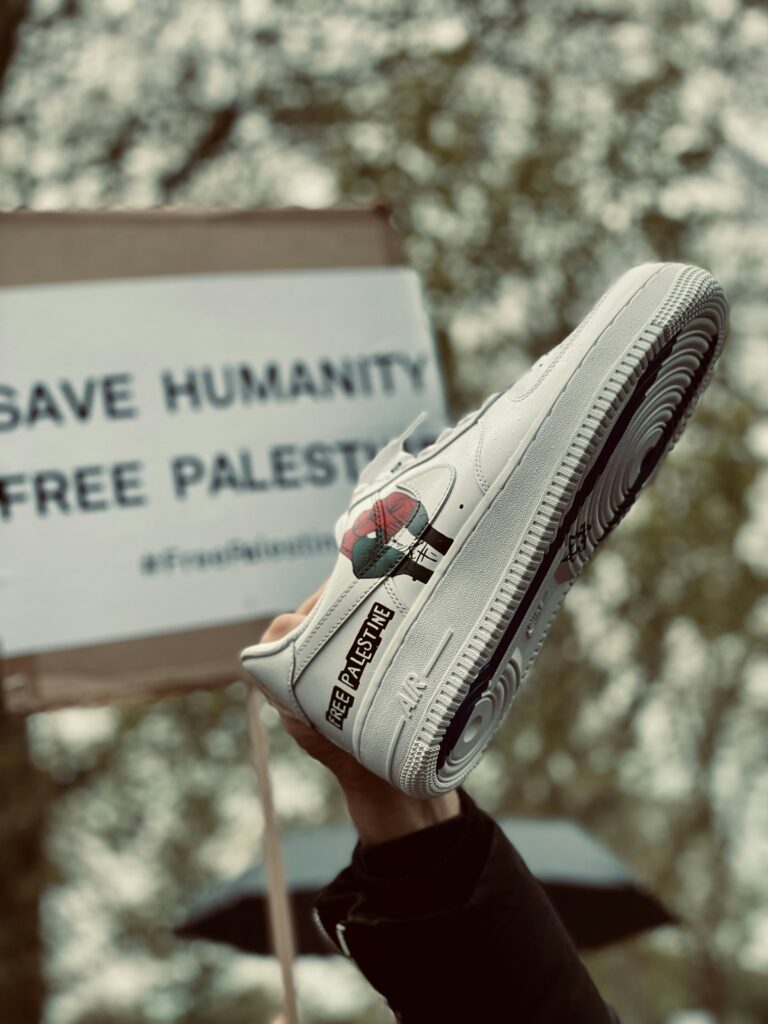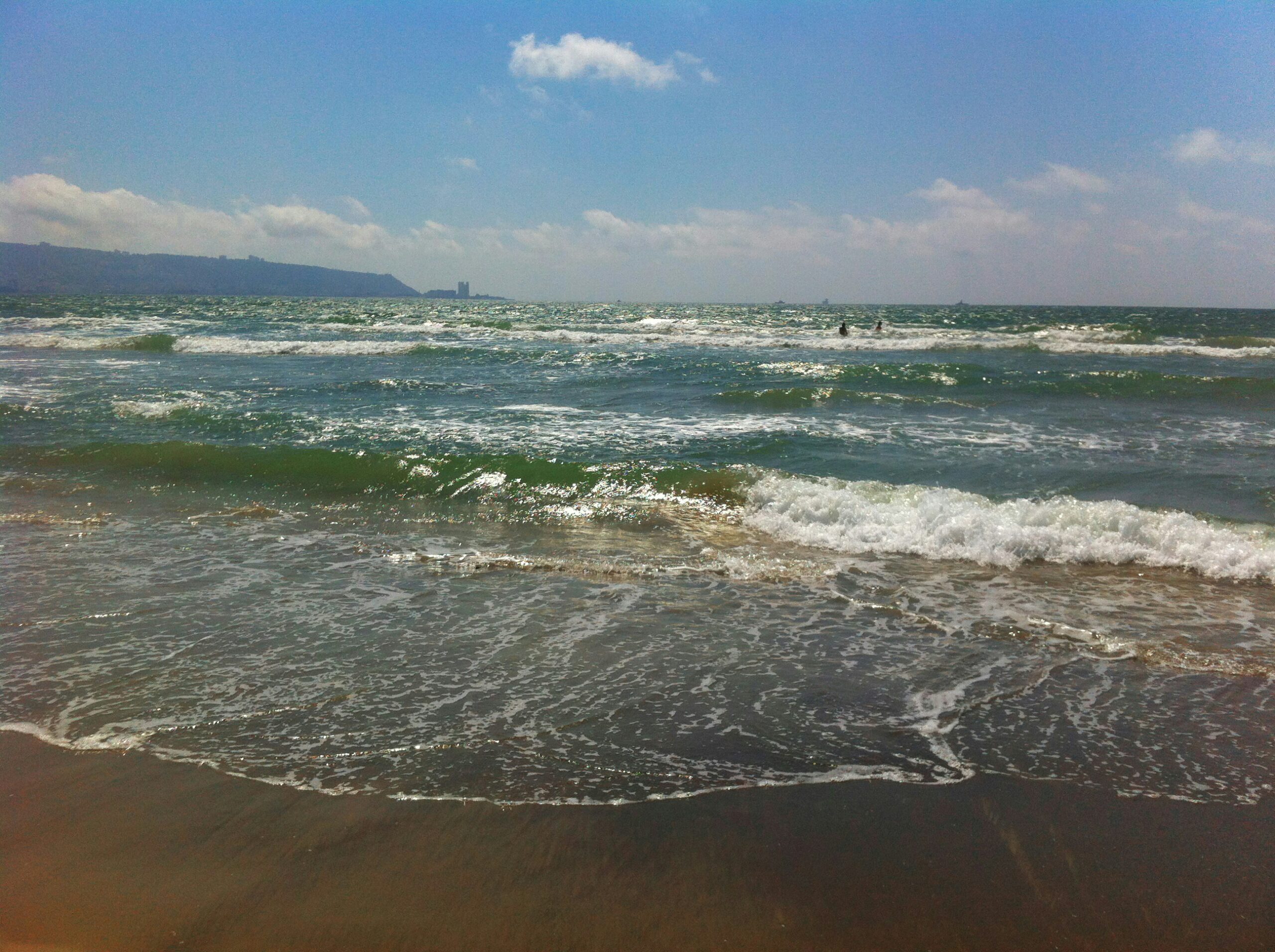In a surprising turn of events at the Whitney Biennial, museum officials and curators were caught off guard by a hidden message within an artwork. Created by Indigenous artist and activist Demian DinéYazhi’, the installation titled “we must stop imagining apocalypse/genocide + we must imagine liberation” slowly revealed the phrase “Free Palestine” through blinking neon lights. Inspired by Indigenous resistance movements and the late Diné activist Klee Benally, the artwork explores the concept of settler colonialism. Museum officials admitted to being unaware of the message, which they initially mistook as drawing attention to other words. While the revelation has sparked discourse, there are no plans to remove or alter the artwork, as the biennial embraces contemporary art addressing timely matters.

Background
Introduction to the Whitney Biennial
The Whitney Biennial is an art exhibition held by the Whitney Museum of American Art that takes place every two years. It is known for showcasing works by contemporary artists and addressing current social and political issues through art. The Biennial has a reputation for inviting provocative and controversial art, sparking dialogue and reflection within the art world and society at large.
Overview of the artist Demian DinéYazhi’
Demian DinéYazhi’ is an Indigenous artist and activist whose work explores themes of Indigenous identity, resistance, and decolonization. DinéYazhi’ is a member of the Navajo Nation, and their art often reflects the struggles and experiences of Indigenous peoples in the context of settler colonialism. Through various mediums, including poetry, visual art, and performance, DinéYazhi’ aims to challenge existing power structures and amplify the voices of marginalized communities.
Description of the artwork
The artwork in question is titled “we must stop imagining apocalypse/genocide + we must imagine liberation.” It is a neon installation that features blinking lights to create words and phrases. The installation explores the concepts of apocalypse, genocide, and liberation in the context of Indigenous resistance movements. The artwork aims to engage viewers in a dialogue about settler colonialism and the importance of imagining a future free from oppression and injustice.
Explanation of the message ‘Free Palestine’
Within the blinking lights of the neon installation, the message “Free Palestine” is revealed. This message, hidden amidst the other words and phrases, calls attention to the ongoing Israeli-Palestinian conflict and the Palestinian struggle for self-determination and freedom. The inclusion of this message within the artwork adds another layer of political and social commentary, reflecting the artist’s concerns about settler colonialism and the erasure of Indigenous peoples’ rights.
Discovery of the Message
Confirmation by the Whitney Museum
After the installation of the artwork, the Whitney Museum of American Art confirmed that the blinking lights in Demian DinéYazhi’s artwork spelled out the phrase “Free Palestine.” Museum officials and curators admitted that they were unaware of this message during the planning and installation process.
The unexpected revelation
The revelation of the “Free Palestine” message was unexpected both for the museum officials and the viewers. The message was cleverly hidden amongst other words, and many viewers initially missed its presence. It was only after closer inspection and the attention brought to it by a writer from Artnet News that the message became widely known.
Reaction of museum officials and curators
Upon learning about the hidden message, museum officials and curators expressed surprise and regret for their lack of awareness. They acknowledged that the inclusion of the message was not intentional on their part and that they did not consider its implications when deciding to display the artwork. The museum expressed a commitment to being a space for artists’ conversations and decided to retain the artwork despite the controversy.
Timing of the artwork installation
It is important to note that the artwork was fabricated in the fall before the outbreak of the Israel-Hamas war. The timing of the installation was coincidental, and the artist’s original intention was not specifically related to the conflict. However, the presence of the message “Free Palestine” in the artwork inevitably brought it into the context of the ongoing conflict and added another layer of significance to its interpretation.

Meaning and Inspiration
Indigenous resistance movements
The artwork by Demian DinéYazhi’ is deeply influenced by Indigenous resistance movements. Through their art, DinéYazhi’ aims to challenge and disrupt settler colonialism and shed light on the struggles faced by Indigenous communities. By highlighting themes of resistance, the artist seeks to amplify the voices and experiences of Indigenous peoples and inspire conversations about decolonization.
Influence of Diné activist Klee Benally
The artist cites Diné activist Klee Benally as a source of inspiration for the artwork. Klee Benally, who passed away in December, was a friend and collaborator of DinéYazhi’. Benally was known for his activism and advocacy on behalf of Indigenous rights and was a prominent Indigenous voice within the art world. His legacy and influence can be seen in DinéYazhi’s work, including the neon installation that sparked the controversy.
Exploring forms of settler colonialism
The artwork also tackles the concept of settler colonialism, which refers to the displacement and domination of one population by another. By highlighting the struggles faced by Indigenous communities, DinéYazhi’ draws attention to the long-standing impact of settler colonial institutions and the ongoing fight for justice and liberation. The inclusion of the message “Free Palestine” within the artwork serves as a way to connect different struggles against settler colonialism, acknowledging the interconnectedness of various marginalized communities.
Unawareness of the Message
Lack of knowledge by museum officials
The fact that museum officials were unaware of the hidden message in the artwork reveals a lack of knowledge and attention to detail during the planning and installation process. It raises questions about the thoroughness of the museum’s review and approval process for artworks, especially those with potentially controversial or politically charged content. The oversight also suggests a lack of understanding of the nuances and importance of addressing timely social and political issues within the art world.
Viewers’ initial unawareness
The viewers of the artwork, both museum visitors and art critics, initially missed the presence of the hidden message. The clever way in which the words were arranged among other phrases and the subtle blinking lights made it easy to overlook the message. This initial unawareness highlights the importance of careful observation and critical engagement with artworks to fully comprehend their intended messages and meanings.
Assumption about the purpose of the lights
Museum officials and curators initially assumed that the flickering lights in the artwork were meant to draw attention to words like “genocide” and “liberation.” This assumption reveals a lack of thoroughness and attention to detail in the evaluation and interpretation of the artwork. It underscores the need for a more comprehensive understanding of an artist’s intentions and the potential for hidden or subtle messages within artworks.
Contradictory statements by the museum
The initial response from museum officials regarding the artwork’s title and content was contradictory. The museum initially stated that the artwork had been conceived before the current conflict and was a reflection on Indigenous resistance movements. However, they later admitted that they were unaware of the “Free Palestine” message and its implications. These contradictory statements demonstrate a lack of clarity and consistency in the museum’s communication and understanding of the artwork.

Publication of the Message
Acknowledgment by writer Annie Armstrong
The presence of the “Free Palestine” message in the artwork was first acknowledged by writer Annie Armstrong in an article for Artnet News. Armstrong’s article brought attention to the hidden message and sparked a wider conversation within the art community and beyond. Her discovery shed light on the artwork’s political implications and deepened the discourse surrounding the Israeli-Palestinian conflict within the context of the art world.
The significance of the message
The inclusion of the message “Free Palestine” within the artwork carries significant political and social implications. It aligns the struggles of Indigenous communities with the Palestinian struggle for self-determination and freedom. The message calls attention to the ongoing Israeli-Palestinian conflict and the need for justice and equality. By incorporating this message into their artwork, DinéYazhi’ effectively connects different forms of resistance against settler colonialism and fosters dialogue about the larger issues of oppression and human rights.
Decision by the museum to retain the artwork
Despite the controversy and unexpected revelation of the hidden message, the Whitney Museum decided to retain the artwork. The decision reflects the museum’s commitment to artists’ conversations and the role of art in addressing timely matters and promoting dialogue. By choosing to keep the artwork on display, the museum sends a message of support to the artist and acknowledges the importance of addressing political and social issues within the art world.
Commitment to artists’ conversations
The retention of the artwork by the Whitney Museum highlights its commitment to providing a space for artists to express their ideas and engage in conversations about pressing social and political issues. The museum recognizes the power of art to provoke thought, challenge existing narratives, and spark meaningful dialogue. This commitment sets a precedent for future exhibitions and reinforces the role that art institutions can play in fostering a more inclusive and politically aware art world.
Challenges for Museums
Art world’s response to the Israel-Hamas war
The Israeli-Palestinian conflict has sparked intense debate and division within the art world. Museums and cultural institutions have faced scrutiny from artists, employees, trustees, and the public for their statements and actions related to the conflict. The inclusion of the message “Free Palestine” in the artwork adds another layer of complexity to the discussion and highlights the challenges museums face in navigating politically charged topics.
Scrutiny of museums’ statements on the conflict
Museums’ statements on the Israeli-Palestinian conflict have come under increased scrutiny, with calls for transparency, accountability, and a commitment to human rights. The controversy surrounding the Whitney Biennial artwork underscores the need for museums to carefully consider the implications of their actions and to engage in open dialogue with artists, activists, and the communities they serve. This scrutiny creates a greater responsibility for museums to address political and social issues in a thoughtful and informed manner.
Resignations, boycotts, and firings in the culture industry
The Israeli-Palestinian conflict has led to resignations, boycotts, and firings within the culture industry, as individuals take a stand against institutions they perceive as complicit in human rights violations. The Whitney Biennial artwork and its hidden message have become part of this larger conversation, prompting individuals to question their support for or association with the museum. The conflict highlights the broader tensions and ethical questions faced by the art world in navigating politically sensitive issues.
Deeper Meaning of the Message
Alignment with the artwork’s purpose
The “Free Palestine” message aligns with the purpose and intentions of the artwork by Demian DinéYazhi’. The artwork explores themes of resistance, decolonization, and the oppression faced by marginalized communities. By including the message within the blinking lights, DinéYazhi’ expands the conversation and connects the struggles of Indigenous peoples with the Palestinian struggle for liberation. The artwork’s deeper meaning is amplified through this message, reinforcing its political and social relevance.
Response to settler colonial institutions
The inclusion of the “Free Palestine” message in the artwork can be seen as a response to settler colonial institutions. It challenges the dominant narratives and power structures perpetuated by these institutions and calls attention to the ongoing struggles against settler colonialism. By making a statement in support of Palestine, the artwork questions the authority and legitimacy of institutions that overlook or contribute to the oppression of Indigenous peoples and other marginalized communities.
Connection to the overall theme of the installation
The inclusion of the “Free Palestine” message within the neon installation underscores the overall theme of the artwork, which is centered around imagining liberation and resisting various forms of oppression. By highlighting the Palestinian struggle for freedom, the artwork broadens the conversation and invites viewers to consider the interconnectedness of different struggles against injustice. The message serves as a reminder that liberation is a collective effort and requires solidarity across various marginalized communities.
The Artist’s Perspective
Explanation by Demian DinéYazhi’
Demian DinéYazhi’ has explained that the artwork is about Indigenous resistance and opposition to forms of settler colonialism. The neon installation, with its blinking lights and hidden message, serves as a tool to engage viewers in a conversation about the systemic issues faced by Indigenous communities. By incorporating the message “Free Palestine” within the artwork, DinéYazhi’ aims to draw connections between different struggles and advocate for justice and liberation for all.
Intent behind the artwork
The intent behind the artwork was to spark dialogue and challenge existing power structures. The blinking lights and hidden message were intentionally designed to capture viewers’ attention and provoke curiosity. The artwork encourages critical thinking and reflection on the injustices faced by Indigenous communities, as well as those endured by the Palestinian people. Through this intentional provocation, the artist seeks to inspire conversations and contribute to the larger discourse on oppression, decolonization, and liberation.
Understanding the artist’s vision
To fully understand the artist’s vision, one must consider the broader context of Indigenous resistance movements and the artist’s personal experiences and perspectives. The artwork is a reflection of DinéYazhi’s deep engagement with these issues and their commitment to using art as a catalyst for social change. By examining the artist’s broader body of work and their statements on settler colonialism, it becomes clear that the inclusion of the “Free Palestine” message resonates with their overarching artistic vision and reflects their desire to challenge prevailing power structures.
The Impact and Continuation
Discussion sparked by the message
The message “Free Palestine” within the artwork has sparked a broader discussion surrounding the Israeli-Palestinian conflict and the role of art in addressing political and social issues. It has brought attention to the interconnected struggles against settler colonialism and raised questions about the responsibilities and actions of museums and artists in relation to these issues. The message has served as a catalyst for dialogue and reflection within the art world and beyond, prompting individuals to consider their own roles in advocating for justice and equality.
Dialogue on the Israeli-Palestinian conflict
The artwork’s hidden message has contributed to a deeper dialogue on the Israeli-Palestinian conflict and the ongoing struggle for Palestinian self-determination. It has offered an opportunity for individuals to confront their own biases and examine the complexities of the conflict. The message has also highlighted the importance of amplifying marginalized voices and supporting movements for justice and liberation.
Long-lasting effects on the art world
The impact of the hidden message within the artwork extends beyond the immediate controversy at the Whitney Biennial. It has raised important questions about the responsibilities of museums, the role of art in addressing political and social issues, and the power dynamics within the art world. These discussions and reflections are likely to have long-lasting effects on the art world, influencing curatorial decisions, artists’ practices, and the expectations of audiences. The controversies sparked by this artwork serve as a reminder of the art world’s potential to challenge and disrupt existing power structures.
Conclusion
Reflection on the artwork and its message
The presence of the message “Free Palestine” within Demian DinéYazhi’s artwork at the Whitney Biennial has sparked important conversations and reflections on the Israeli-Palestinian conflict, the struggles of Indigenous communities, and the role of art in addressing timely matters. The hidden message serves as a powerful symbol of resistance and solidarity, connecting different marginalized communities and inviting viewers to reflect on their own roles in advocating for justice and liberation.
Implications for future exhibitions
The controversy surrounding the hidden message in the artwork highlights the need for museums to be more diligent in their review and interpretation of artworks. It underscores the importance of engaging in conversations with artists, considering the broader social and political contexts, and addressing potential controversies in a thoughtful and informed manner. Future exhibitions will likely be influenced by this incident, with a greater emphasis on transparency, accountability, and the inclusion of diverse voices and perspectives.
Importance of addressing timely matters
The artwork and its hidden message serve as a reminder of the importance of addressing timely social and political matters within the art world. By engaging with current issues, artists and institutions can contribute to meaningful dialogue, challenge existing power structures, and inspire change. The controversy surrounding this artwork underscores the role of art in fostering conversations and reflections that have the potential to create a more equitable and just society.

